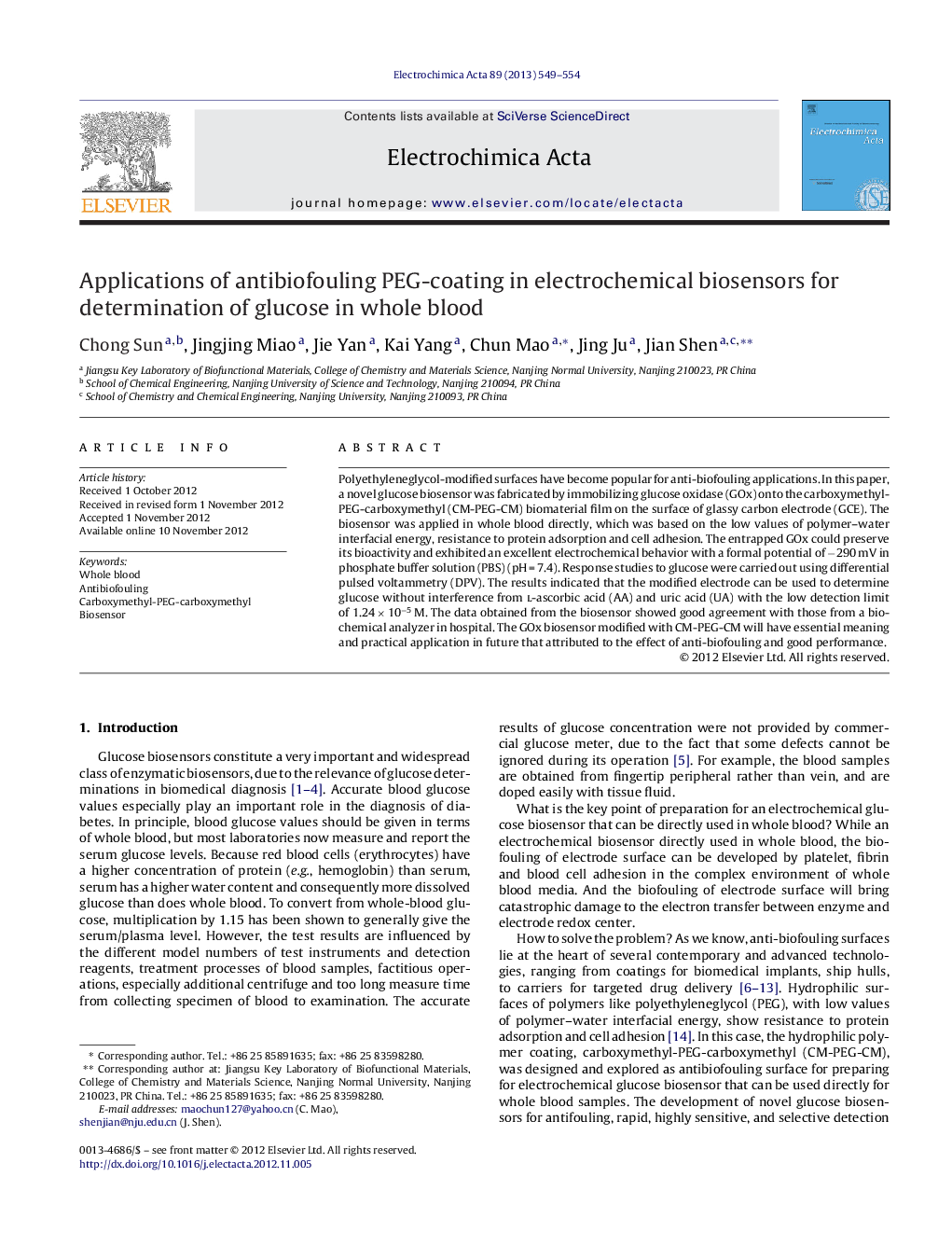| Article ID | Journal | Published Year | Pages | File Type |
|---|---|---|---|---|
| 187635 | Electrochimica Acta | 2013 | 6 Pages |
Polyethyleneglycol-modified surfaces have become popular for anti-biofouling applications. In this paper, a novel glucose biosensor was fabricated by immobilizing glucose oxidase (GOx) onto the carboxymethyl-PEG-carboxymethyl (CM-PEG-CM) biomaterial film on the surface of glassy carbon electrode (GCE). The biosensor was applied in whole blood directly, which was based on the low values of polymer–water interfacial energy, resistance to protein adsorption and cell adhesion. The entrapped GOx could preserve its bioactivity and exhibited an excellent electrochemical behavior with a formal potential of −290 mV in phosphate buffer solution (PBS) (pH = 7.4). Response studies to glucose were carried out using differential pulsed voltammetry (DPV). The results indicated that the modified electrode can be used to determine glucose without interference from l-ascorbic acid (AA) and uric acid (UA) with the low detection limit of 1.24 × 10−5 M. The data obtained from the biosensor showed good agreement with those from a biochemical analyzer in hospital. The GOx biosensor modified with CM-PEG-CM will have essential meaning and practical application in future that attributed to the effect of anti-biofouling and good performance.
